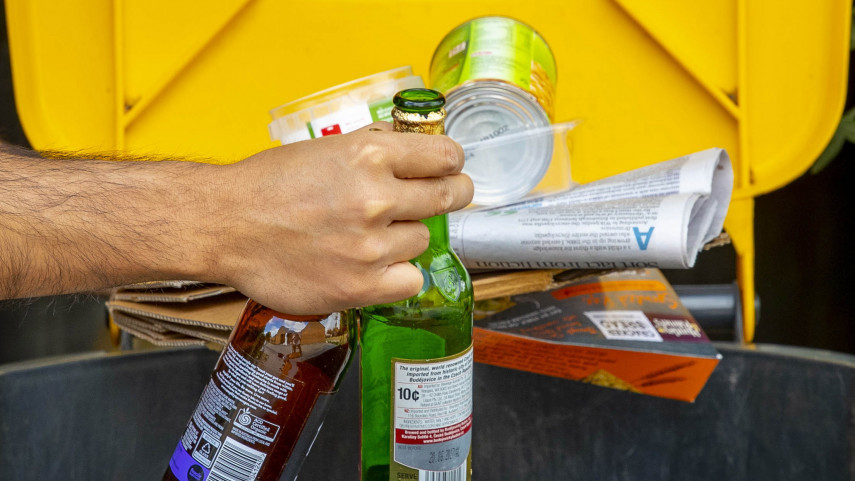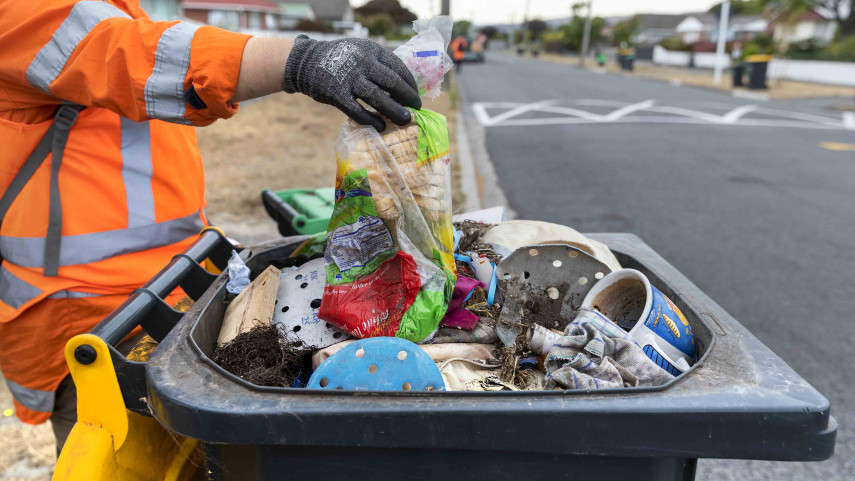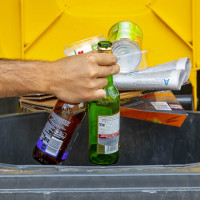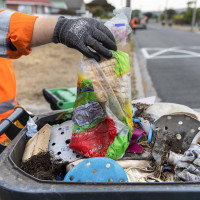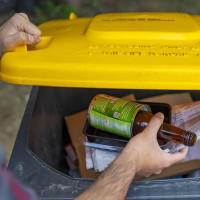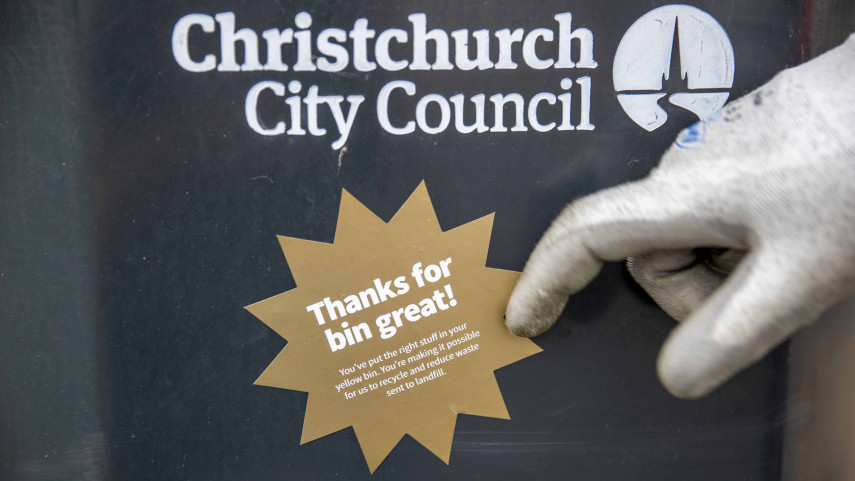
More people getting gold stars for good recycling

Share this story
Spot checks of yellow wheelie bins put out for kerbside collection show people are getting the message about what items can be accepted for recycling.
In January a team of four began conducting visual checks of the yellow wheelie bins in a bid to improve people’s understanding of what stuff can be put out for recycling.
The team has been placing gold stars on bins which have all the right stuff in them and leaving behind educational material at those properties where the bins have contained material which cannot be accepted.
In the first weeks of the programme, the checks showed about one in three people were misusing their yellow wheelie bin by putting general rubbish in it.
Only about 14 per cent of the bins inspected were getting gold stars.
That situation though is improving as people’s awareness of what can be recycled grows.
“The team has been re-visiting the properties they checked in the first weeks of the programme and they have been noticing a big improvement in people’s recycling habits,’’ says Council Resource Recovery Manager Ross Trotter.
“We are now seeing less contamination in the yellow wheelie bins and about 35 per cent of the bins that are checked are receiving gold stars.
“We would really like to thank those people who have acted on the information we have provided about what stuff can be recycled and changed their habits accordingly,’’ Mr Trotter says.
About 57 per cent of the bins checked still have a small amount of contamination in them.
Soft plastics, lids still causing issues
“The things that still seem to be tripping people up are soft plastics and lids on bottles. Any plastic that you can easily scrunch or bend in your hand – like plastic bags, cling film, bubble wrap or biscuit trays – need to go in the red bin, not the yellow bin.
“Lids, even if they are made of plastic, need to be removed from bottles and containers and put in the red bin otherwise they can contaminate the other recyclable material.’’
Mr Trotter says when the bin checks first began about one in three people were misusing their recycling bins by putting general rubbish in them. Now, only about eight per cent are misusing the bins.
“If people continue to put rubbish in their recycling bins despite our attempts to educate them about what material belongs in them, they will ultimately have their bins removed. The yellow bins are for specific household recyclable items and we will not tolerate them being used for general rubbish.’’
Mr Trotter says it is important for people to understand the contents of the recycling bins will continue to be checked on a regular basis, even once the current audit programme has ended.
“The companies that take our recyclable material have a low threshold for contamination. If a load has too much of the wrong stuff in it, they will simply reject it and it will be sent to landfill. We want to avoid that so we will check the content of bins on an ongoing basis to ensure people are recycling right.’’
Check the Council's website or download the helpful Christchurch Wheelie Bins App to find out which bin stuff belongs in.

